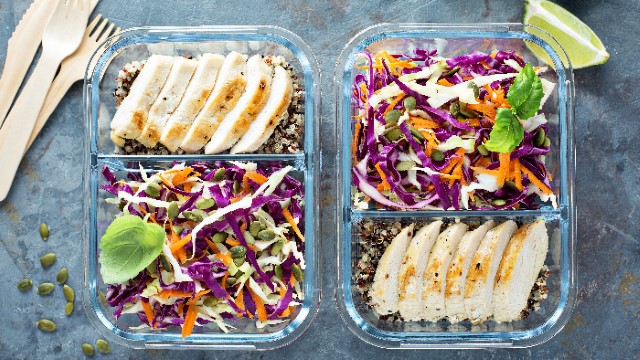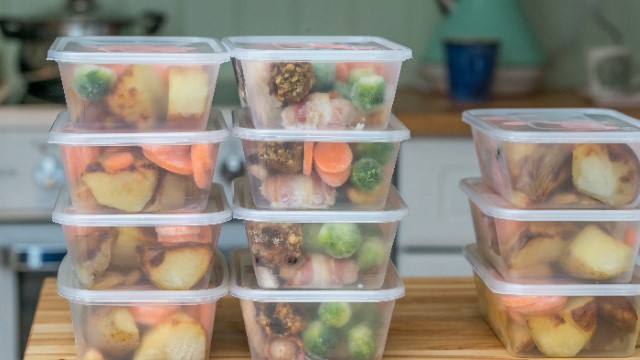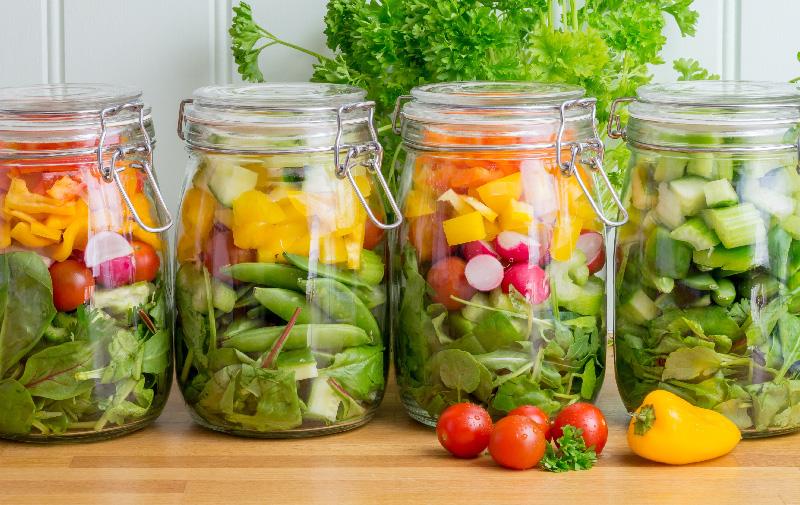Meal prepping may be the most overlooked approach to maintaining a healthy diet. We know it can seem overwhelming and time-consuming (who wants to chop vegetables in the kitchen for hours?), especially when you’re juggling a busy schedule. The truth is that a little planning goes a long way.
When you prep your meals, you don’t have to swing by the drive-thru, wander aimlessly around the grocery store, or calculate the proper portion control. In fact, meal prep can save you time and money, help you make better dietary decisions, and keep you on track with your weight loss and health goals.
But, before you get started, read these tips to help you plan and prep your meals. You’ll be surprised at how quick and easy it can be! What’s more is that you will have extra time for the people and things you love most.
Plan and Organize
You’ve probably heard the saying, “Fail to plan, plan to fail.” This statement couldn’t be truer when it comes to meal prep. The first step is to think about the type of food you want to eat. Maybe it’s grilled chicken salad or shrimp and vegetables. Get creative, and mix up your meals. Look online for new recipes that will inspire you and appeal to your taste buds.
Whatever you choose, write down your meals for the week (a journal works great!), along with all the ingredients you need, and take that list with you to the grocery store. Color code and categorize each meal so you know what’s for breakfast, lunch, and dinner. For a nutritious snack, try an IsaLean™ Bar, which comes in nine great flavors, such as Chocolate Peanut Crunch and Nutty Caramel Cashew.
Consider purchasing small, inexpensive containers to help you portion out servings. This is also a simple, easy way to store your meals and transport them to school or the office.

Get Cookin’
When it comes to meal prepping, some of the most common foods to use include chicken breast; lunch meat; hard-boiled eggs; brown rice; veggies such as avocado, broccoli, cauliflower, or zucchini; and fruits such as apples, oranges or pears. If you don’t feel like buying fresh produce, there are plenty of frozen options available that are just as nutritious.
Grilling, steaming, or roasting are great ways to prepare lean meats and veggies to reduce or eliminate unwanted oil. Choose zero-calorie or low-calorie marinades, spices, and seasonings to kick up the flavor without adding extra fat.
Always remember to cool and store your food to appropriate temperatures to avoid contamination from harmful bacteria.
While you may be spending a little bit longer than usual in the kitchen, make it fun by turning on music or calling a friend. You’ll be surprised at how fast the time will go.
Looking for a few shortcuts? Check out the CDC for healthy-recipe and meal-planning ideas.

Pack, and Store
Once you’re finished meal prepping, portion out servings, and label each container with a meal name and date. If you’re feeling extra ambitious, pack a few meals to throw in the freezer. You’ll thank me when you come home from a long day at work, your refrigerator is empty, and your kids are asking, “What’s for dinner?”




